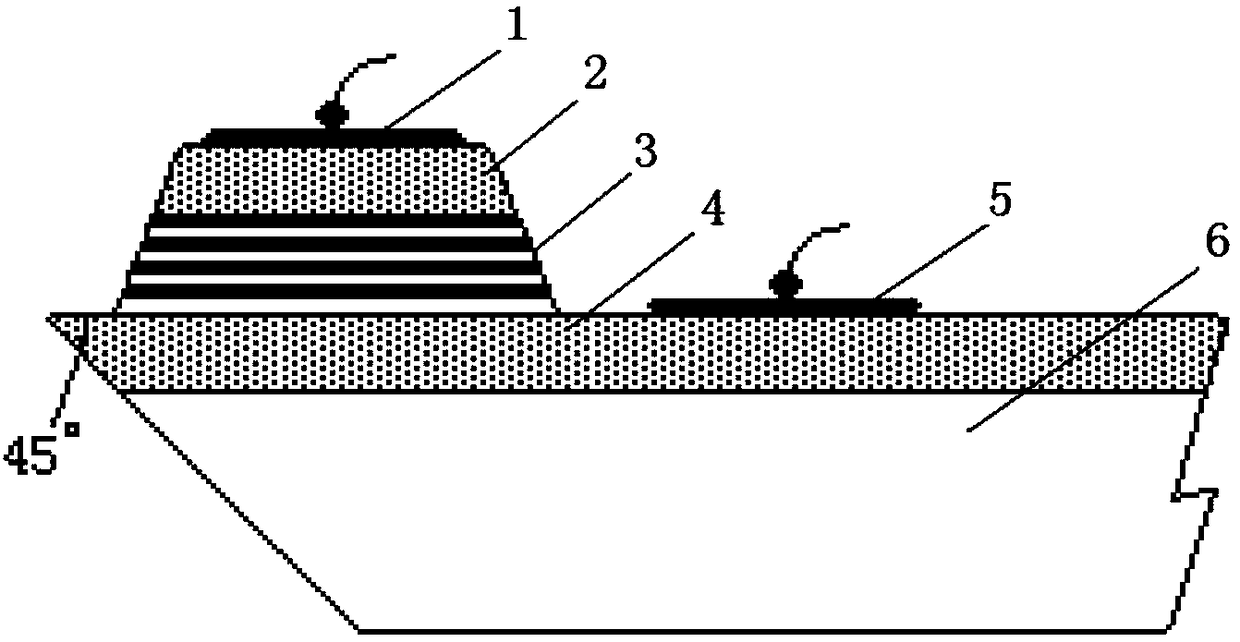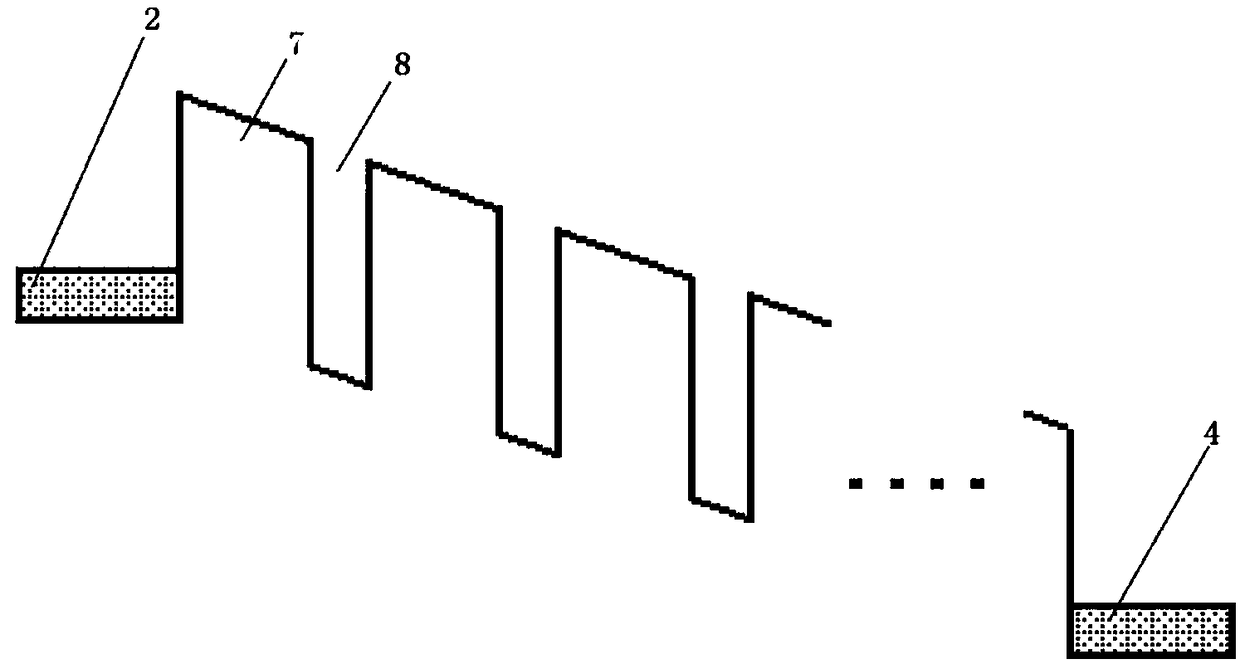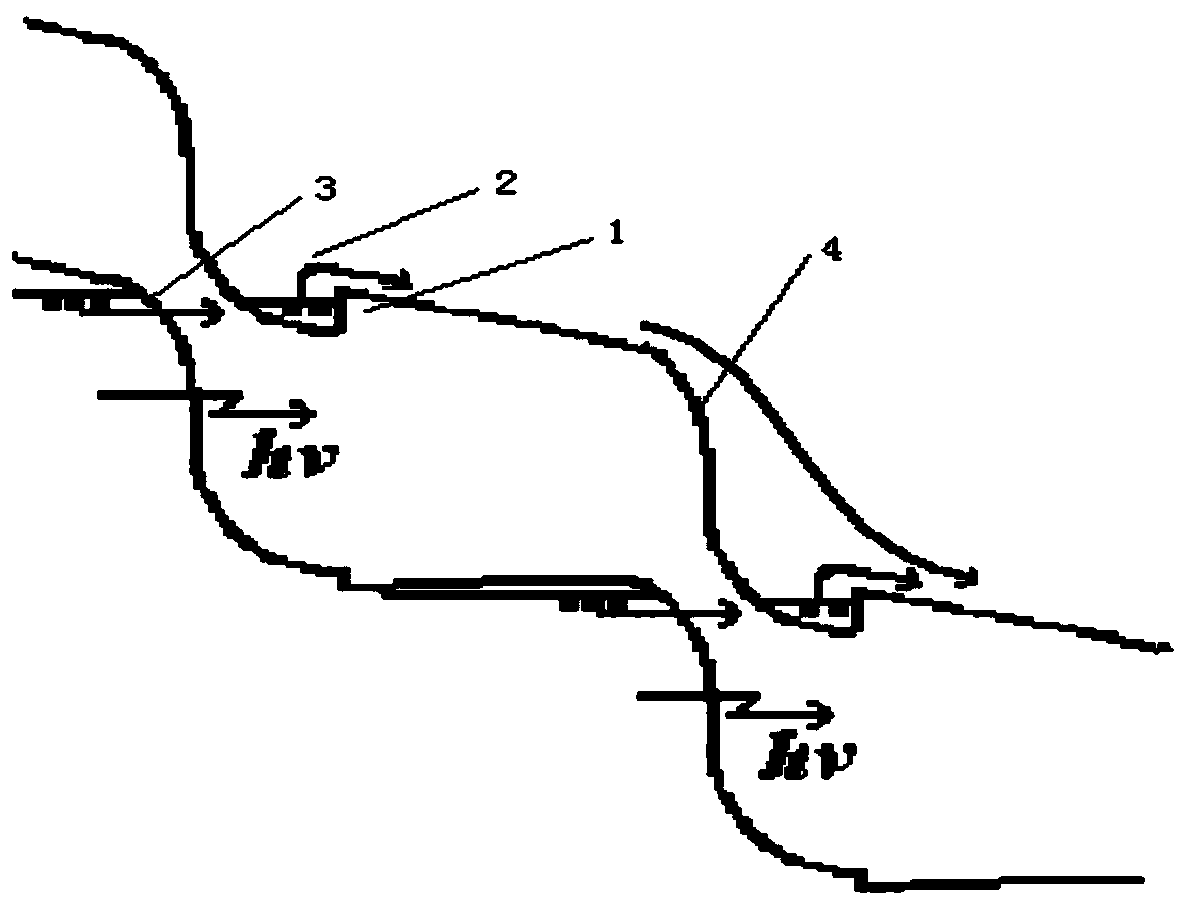Tunnel compensating superlattice infrared detector
An infrared detector and superlattice technology, applied in semiconductor devices, electrical components, circuits, etc., can solve the problems of large dark current of devices, widening of quantum wells, narrowing of quantum wells, etc., and achieve fast photoresponse and large Light-responsive, easy-to-make effects
- Summary
- Abstract
- Description
- Claims
- Application Information
AI Technical Summary
Problems solved by technology
Method used
Image
Examples
Embodiment Construction
[0026] An infrared detector with tunnel compensation multi-superlattice active regions, in which an N-type lower contact layer 4 is grown on a substrate 6, and then a tunnel compensation superlattice infrared absorption region is grown, and a P-type upper contact layer 2 is grown, and the mesa is made by semiconductor technology , and make an upper metal electrode 1 and a lower metal electrode 5 on the top and bottom of the mesa, the tunnel compensation superlattice infrared absorption region includes a repeating structure formed by at least one basic unit, and the basic unit is a blocking barrier from bottom to top 9. Superlattice infrared absorption region 10, heavily doped N-type region 11 and heavily doped P-type region 12;
[0027] Wherein the heavily doped N-type region 11 and the heavily doped P-type region 12 form a tunnel junction;
[0028] The superlattice infrared absorption region 10 is composed of periodically arranged type I superlattice material systems, and the...
PUM
 Login to View More
Login to View More Abstract
Description
Claims
Application Information
 Login to View More
Login to View More - Generate Ideas
- Intellectual Property
- Life Sciences
- Materials
- Tech Scout
- Unparalleled Data Quality
- Higher Quality Content
- 60% Fewer Hallucinations
Browse by: Latest US Patents, China's latest patents, Technical Efficacy Thesaurus, Application Domain, Technology Topic, Popular Technical Reports.
© 2025 PatSnap. All rights reserved.Legal|Privacy policy|Modern Slavery Act Transparency Statement|Sitemap|About US| Contact US: help@patsnap.com



